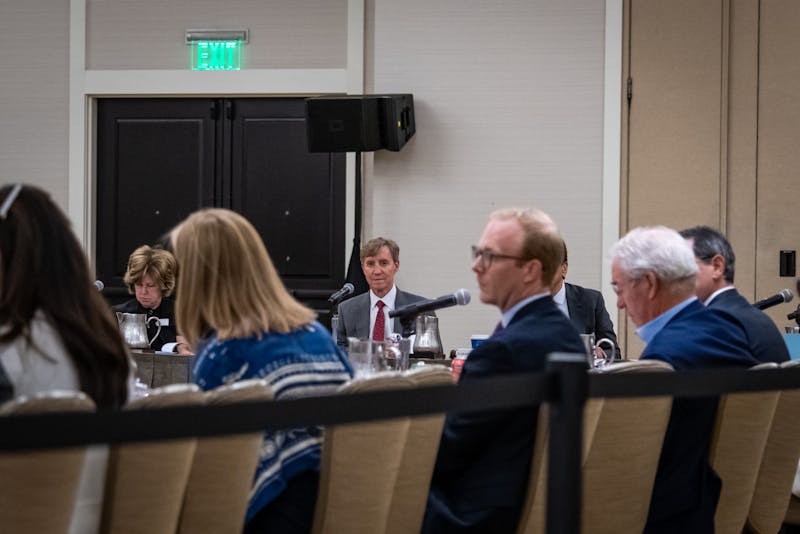
Scott Mackler is the living future of medical technology.
Mackler, a researcher in Penn's Departments of Medicine and Pharmocology, was diagnosed with Amyotrophic Lateral Sclerosis, commonly known as "Lou Gehrig's Disease," in May of 1999.
The disease causes motor brain cells to degenerate, eventually debilitating all mobility, speech and respiration. Mackler can't speak -- he can only blink his eyes and give a half smile.
To communicate, he relies on longtime caregiver and personal assistant Dana Williams.
And, he relies on his brain.
Mackler uses EEG technology, via what is known as the Brain Communication Interface to form words.
Reclining in his wheelchair in a dark room - his eyes are sensitive to light - filled with computer screens and family photos, Mackler stares intently at a computer screen flashing numbers, letters and shortcuts.
Looking for a letter, Mackler concentrates on the number of times it flashes.
His brainwaves are then picked up by electrodes connected to a swim cap that sends the information to the computer.
Soon, a letter appears on another screen. Mackler can type about six words a minute.
BCI software was first developed 20 years ago by Emanuel Donchin, according to Jonathan Wolpaw of the Wadsworth Center, a laboratory run by the New York State Department of Health, who is spearheading BCI research.
"The best movement control that humans have achieved has been obtained with noninvasive EEG methods," Wolpaw said.
Introduced to the software a little under two years ago by friends in the field, Mackler is one of only three or four people currently with the software, which noninvasively records his brainwaves.
He uses it to conduct his daily research on cocaine addiction, as well as to keep up with his e-mail.
And at home, Mackler relies on BCI to turn on his television and dim the lights.
Because BCI is relatively labor intensive, Mackler tends to rely on a system of blinking with Williams when talking with others face to face.
Pad of paper in hand, she goes through the alphabet, waiting for a blink to signal she has reached the letter Mackler desires.
ALS is diagnosed in 5,600 Americans a year, according to the ALS Foundation. There is currently no known cure.
Wolpaw hopes to improve the software and disseminate it via the newly established the Brain Communication Foundation.
According to foundation president Alice Levy, who also teaches the Wharton Global Consulting Practicum, the foundation hopes to provide BCI technology to those who cannot otherwise communicate and to support Wolpaw's work.
"There's probably 3,500 people in the U.S. who are locked in and another 500 who are created every year," said foundation chairman and Wharton professor Leonard Lodish.
"We got about 150 requests from people which eventually we are going to try and fulfill," once they pass state regulations, he said.
Until then, the foundation is focusing on raising funds, a goal that may be helped by a recent piece on CBS' 60 Minutes that profiled Mackler and BCI software.
Mackler, however, missed watching his recent television debut.
An avid Giants fan, he has season tickets on the 10-yard line, and was at the game with his son.
The Daily Pennsylvanian is an independent, student-run newspaper. Please consider making a donation to support the coverage that shapes the University. Your generosity ensures a future of strong journalism at Penn.
DonatePlease note All comments are eligible for publication in The Daily Pennsylvanian.







